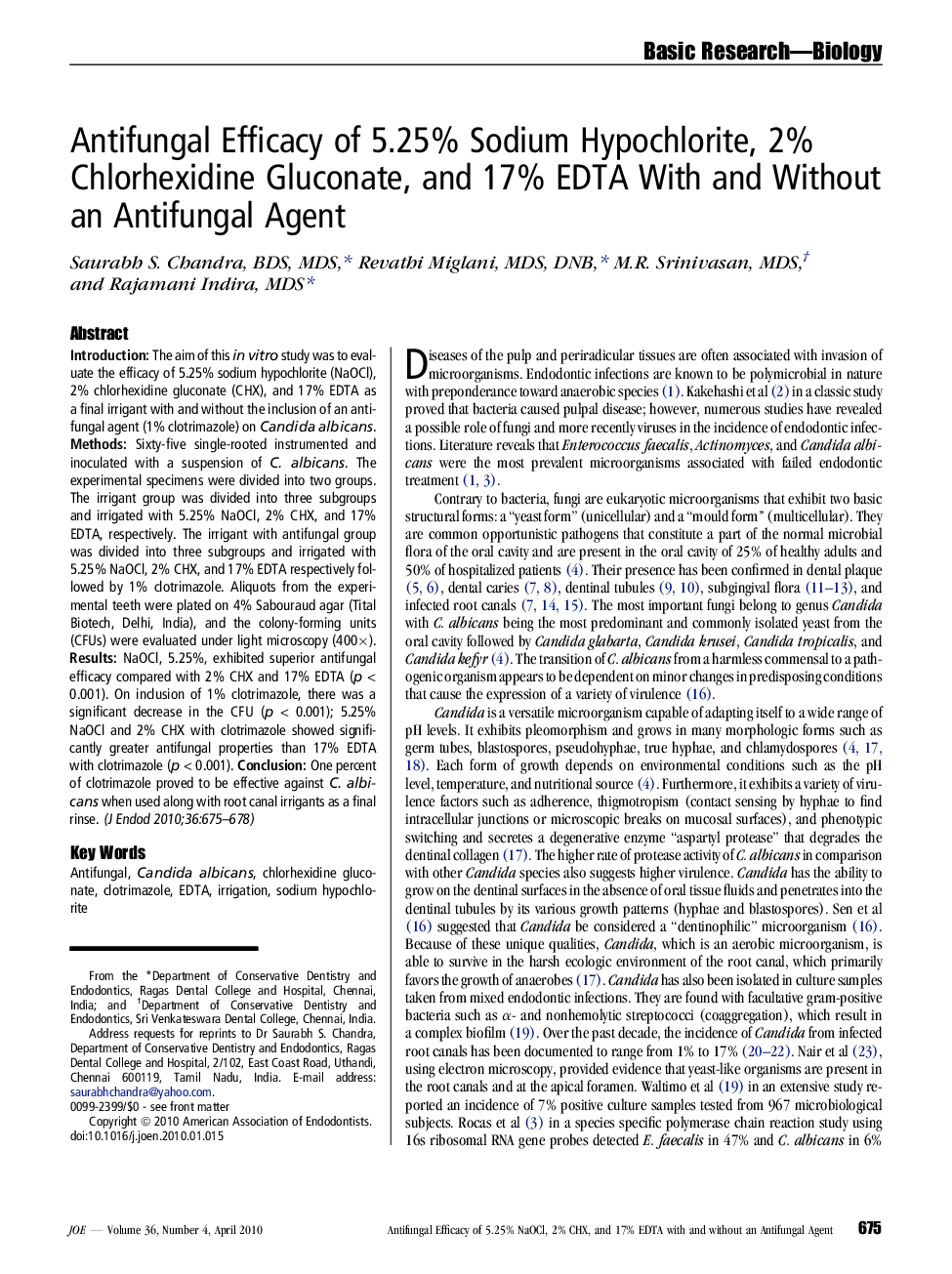| Article ID | Journal | Published Year | Pages | File Type |
|---|---|---|---|---|
| 3147971 | Journal of Endodontics | 2010 | 4 Pages |
IntroductionThe aim of this in vitro study was to evaluate the efficacy of 5.25% sodium hypochlorite (NaOCl), 2% chlorhexidine gluconate (CHX), and 17% EDTA as a final irrigant with and without the inclusion of an antifungal agent (1% clotrimazole) on Candida albicans.MethodsSixty-five single-rooted instrumented and inoculated with a suspension of C. albicans. The experimental specimens were divided into two groups. The irrigant group was divided into three subgroups and irrigated with 5.25% NaOCl, 2% CHX, and 17% EDTA, respectively. The irrigant with antifungal group was divided into three subgroups and irrigated with 5.25% NaOCl, 2% CHX, and 17% EDTA respectively followed by 1% clotrimazole. Aliquots from the experimental teeth were plated on 4% Sabouraud agar (Tital Biotech, Delhi, India), and the colony-forming units (CFUs) were evaluated under light microscopy (400×).ResultsNaOCl, 5.25%, exhibited superior antifungal efficacy compared with 2% CHX and 17% EDTA (p < 0.001). On inclusion of 1% clotrimazole, there was a significant decrease in the CFU (p < 0.001); 5.25% NaOCl and 2% CHX with clotrimazole showed significantly greater antifungal properties than 17% EDTA with clotrimazole (p < 0.001).ConclusionOne percent of clotrimazole proved to be effective against C. albicans when used along with root canal irrigants as a final rinse.
